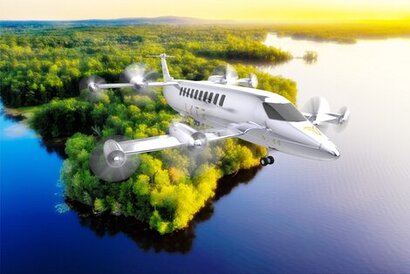Positive activity highlighted by Renewable Energy

Installation of Inertial Sea Wave Energy Converter Completed
Eni has completed the installation of the world’s first ISWEC (Inertial Sea Wave Energy Converter) device connected to the electricity grid of an island. It is located about 800 metres off the coast of the island of Pantelleria and can reach 260 kilowatts of peak power generation converted from wave energy.
This experimental campaign, conducted under real operating conditions, will lead to useful results for developing the second-generation device currently under study.
ISWEC was developed by Eni in collaboration with the Politecnico di Torino and Wave for Energy s.r.l. (a spinoff of the university). It is an innovative technology in the field of offshore renewable energy solutions, converting wave motion into electricity which then supplies energy to offshore infrastructure, small off-grid islands and coastal communities.
ISWEC design can be optimized with reference to the metocean conditions of the site where it is installed by means of a genetic algorithm that leverages on the significant computing power of Eni’s Green Data Center (GDC) based in Ferrera Erbognone.
The machine consists of a steel hull measuring 8 x 15m which houses the energy conversion system, consisting of two gyroscopic units, each more than 2m in diameter. The device is held in place in a 35m deep seabed by a special mooring system that responds to weather and sea conditions, consisting of three mooring lines and a swivel (a rotating joint). The electricity produced is transmitted ashore via an underwater electric cable.
Wave power is one of the main types of renewable energy and is currently untapped. Suffice it to consider that 70% of the Earth’s surface is covered by water (97% of which is made up of seas and oceans). The power that could be generated from sea waves is estimated at around 2 terawatts globally, for a total of 18,000 terawatt-hours a year, almost the same as the entire planet’s demand for electricity.
Read more: https://www.renewableenergymagazine.com/ocean_energy/installation-of-inertial-sea-wave-energy

Advanced air mobility innovator Lyte Aviation has revealed its 40-seat (hybrid) eVTOL SkyBus and SkyTruck programme, designed to be five times more fuel efficient than current helicopters.
The LA-44 SkyBus and complementary SkyTruck cargo variant are designed around a 4.5 tonne payload and are the accumulation of three years’ R&D. The SkyBus will offer a range of 1,000 kilometres with a max speed of 300 km/hr, using mainly currently available technology. The LA-44 is a hybrid electric tandem tilt-wing design, aimed at disrupting other futuristic looking next-gen designs. A full-scale prototype is being planned within 24 months.
The SkyBus’ design features two separate propulsion systems, one electric and powered by hydrogen fuel cells, the other turbine powered by jet fuel/SAF.
“The use of turbine engines will likely remain unavoidable for the foreseeable future, so in order to achieve useful and business-sensible ranges as well as quicker time to market, we have opted for a hybrid, partly electric VTOL” said Freshta Farzam (Founder & CEO). “My personal inspiration with this operating concept stems from the Rotodyne aircraft of the 1950’s. Imagine 70 years later after accomplishing those 350 successful test flights, what can be achieved thanks to the advances in technology that we have seen, and continue to see.”
Read more: renewableenergymagazine.com/electric_hybrid_vehicles/lyte-aviation-reveals-new-40seat4
